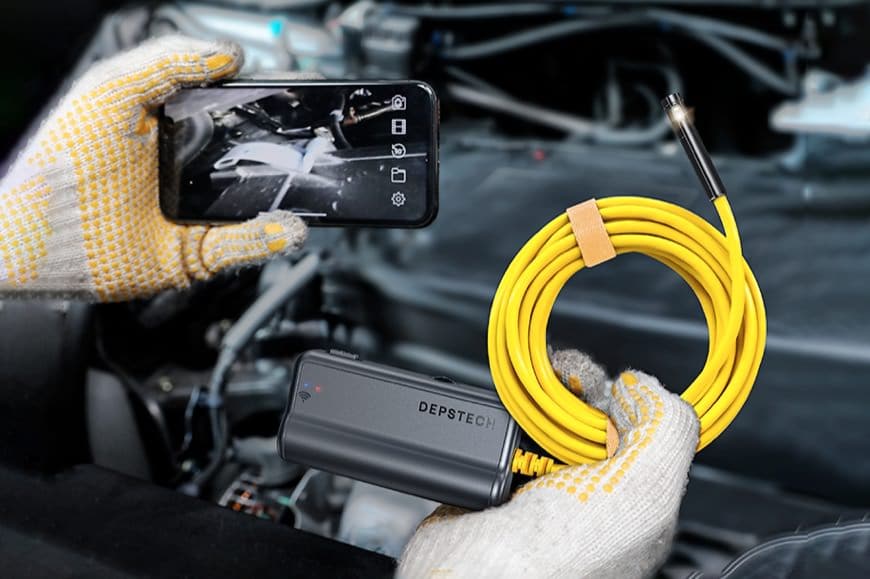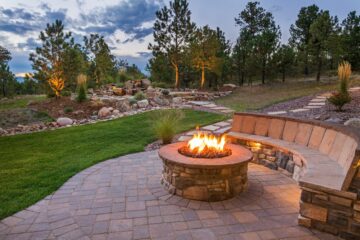The capacity to examine and diagnose regions that are difficult to reach is key in many industries, including aerospace, automotive, manufacturing, and maintenance. This is where borescope cameras shine. Borescopes, also known as boroscopes or endoscopes, are versatile tools that enable visual inspection of spaces that are inaccessible to the naked eye. Discover the many uses, advantages, and best practices of borescope cameras in this in-depth guide. We’ll look at how they’re used in different industries and how to get the most out of them.
Understanding Borescope Cameras: Features And Components
An essential component of a borescope camera is a tube, which can be either flexible or rigid, that houses a small camera and lighting system on one end and an eyepiece or display device on the other. Let’s break down the key components:
Probe
The probe is the flexible or rigid tube that houses the camera and lighting system. Flexible probes are ideal for navigating through curved or narrow spaces, while rigid probes offer stability and precision in straight passages.
Camera
The inspection area can be seen clearly in the films and stills shot by the camera. It may feature adjustable focus, zoom capabilities, and articulation for viewing angles.
Lighting
Built-in LED lights illuminate the inspection area, ensuring clear visibility even in dark or poorly lit environments. Some borescope cameras offer adjustable brightness settings for optimal illumination.
Eyepiece/Display Unit
The eyepiece or display unit allows inspectors to view real-time images and videos captured by the camera. Displays range from integrated LCD screens to smartphone/tablet connectivity for remote viewing.
Articulation
Advanced borescopes feature articulating tips that can be remotely controlled to navigate around obstacles and inspect multiple angles within the inspection area.
Diameter And Length
Borescope cameras come in various diameters and lengths to accommodate different applications and space constraints. Smaller diameters enable inspection of tight spaces, while longer probes are suitable for deep or extended reach.
Applications Of Borescope Cameras Across Industries
The versatility of borescope cameras makes them indispensable tools in a wide range of industries. Here are some typical applications:
Aerospace
Borescope cameras inspect aircraft engines, turbines, and other critical components without disassembly. They help detect defects, foreign object damage (FOD), and signs of wear and corrosion.
Automotive
Borescopes are employed in the automotive industry for engine inspections, cylinder bores, fuel systems, and exhaust systems. They aid in diagnosing engine problems, detecting leaks, and assessing the condition of internal components.
Manufacturing
Borescope cameras play a crucial role in quality control and preventive maintenance in manufacturing facilities. They are used to inspect welds, castings, machined parts, and other components for defects, burrs, and surface irregularities.
Oil And Gas
Borescopes are utilized in the oil and gas sector to inspect pipelines, wellbores, and storage tanks. They help identify corrosion, erosion, blockages, and integrity issues, ensuring the safety and efficiency of operations.
Plumbing And Construction
Plumbers and contractors use borescope cameras to inspect pipes, ducts, and structural cavities for blockages, leaks, and hidden damage. They facilitate non-destructive testing (NDT) and evaluation of building infrastructure.
Medical
Arthroscopy, laparoscopy, and gastrointestinal endoscopy are minimally invasive treatments that make use of borescope cameras, which are also called endoscopes, in the medical industry. They help doctors see inside patients’ bodies for both diagnostic and surgical procedures.
Security And Law Enforcement
Law enforcement agencies and security personnel utilize borescope cameras for tactical surveillance, search and rescue operations, and contraband detection in confined spaces and hard-to-reach areas.
Best Practices For Borescope Inspections
To ensure accurate and adequate inspections with borescope cameras, it’s essential to follow best practices:
Proper Preparation
Before beginning an inspection, familiarize yourself with the equipment and ensure that it is in good working condition. Clean the lens and lighting components to maintain image clarity.
Secure Access
Safely access the inspection area and secure any necessary permits or clearances. Follow proper safety protocols, including wearing personal protective equipment (PPE) as required.
Optimal Lighting
Adjust the brightness and angle of the LED lights to achieve uniform illumination of the inspection area. Avoid glare and shadows that may obscure details or distort images.
Slow And Methodical Movement
Move the borescope probe slowly and steadily to capture clear images and videos. Take your time to thoroughly inspect each area of interest, adjusting focus and zoom as needed.
Documentation
Record findings and observations using the built-in recording function or external recording devices. Take still images and videos to document defects, anomalies, and areas of concern.
Articulation Control
If your borescope camera features articulating tips, use them strategically to navigate around obstacles and explore hard-to-reach areas from multiple angles.
Data Analysis
Review captured images and videos carefully, paying attention to details and anomalies. Compare findings against inspection criteria and standards to determine the severity of any issues detected.
Regular Maintenance
After each usage, give your borescope camera a quick cleaning and check for any signs of damage to keep it in good working order. Follow manufacturer guidelines for calibration, servicing, and storage.
Conclusion
Borescope cameras are invaluable tools for visual inspection and diagnostics across various industries, offering versatility, precision, and efficiency in accessing hard-to-reach areas. By understanding their features, applications, and best practices, inspectors can harness the full potential of borescope cameras to enhance safety, quality, and productivity in their operations. Whether inspecting aircraft engines, automotive components, pipelines, or medical devices, borescopes continue to revolutionize the way we see and understand the world around us.
Keep an eye for more news & updates on Gossips!




